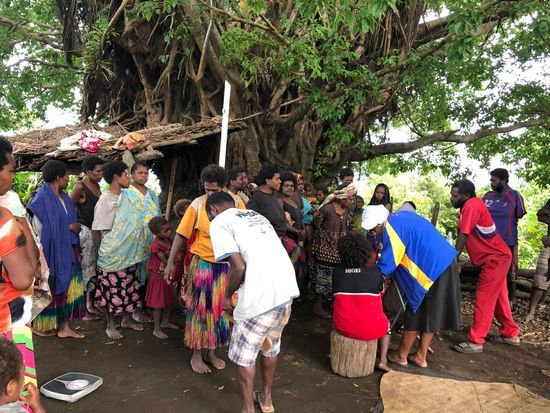
Scabies occurs worldwide. Over 200 million people worldwide are affected at any one time. The disease is endemic in many resource-poor tropical countries, with an estimated average prevalence of 5 – 10% in children. It is especially common in communities where overcrowding and poverty coexist, and where there is limited access to treatment. This course addresses the epidemiology of scabies, clinical features, diagnosis, treatment, socioeconomic impact, and public health interventions.
Photo credit : WHO/Aya Yajima
语言: English
Scabies
课程信息
This course is also available in the following languages:
Bahasa Indonesia - 中文 - català - español - français - Русский - português - العربية - አማርኛ
Scabies can be diagnosed or highly suspected at the peripheral health level. Effective treatment exists for individuals affected, including the persons closely in touch with a patient, and the communities through mass drug administration. The aim of the course is to provide information about scabies to increase knowledge and skills of national and front-line health workers to address this disease.
Learning objectives:
By the end of this course, you should be able to:
- Understand the epidemiology of scabies;
- Describe the clinical aspects;
- Understand how the diagnosis is made;
- Explain how to treat scabies;
- Understand the socioeconomic impact; and
- Describe the public health interventions.
Course duration: Approximately one hour.
Certificates: A Record of Achievement certificate will be available to participants who score at least 80% in the final assessment. Participants who receive a Record of Achievement can also download an Open Badge for this course. Click here to learn how.
课程内容
Module 1: Introduction:
This introductory module gives an overview of Neglected Tropical Diseases, skin-NTDs and scabies.Module 2: Epidemiology of scabies:
By the end of this module, you should be able to: explain what is the causative organism and how it is transmitted; explain the associated risk factors of scabies; describe the geographical distribution of scabies and its prevalence; understand the age and gender distribution.Module 3: Clinical features:
By the end of this module, you will be able to: explain the topographic localization of scabies in children and adults; understand the differences between common and crusted scabies; and describe the potential complications of scabies.Module 4: Diagnosis and treatment:
By the end of this module, you will be able to: use of consensus criteria for the diagnosis of scabies; understand the role of microscopy and dermoscopy in the diagnosis of scabies; list the conditions to be rule out in the differential diagnosis; understand the available treatment options; and explain the contra-indications and possible side effects of each treatment.Module 5: Public health considerations:
By the end of this module, you will be able to: explain the socioeconomic and psychological impact of scabies; list the minimum variables to be recorded; and explain the public health interventions to control scabies.